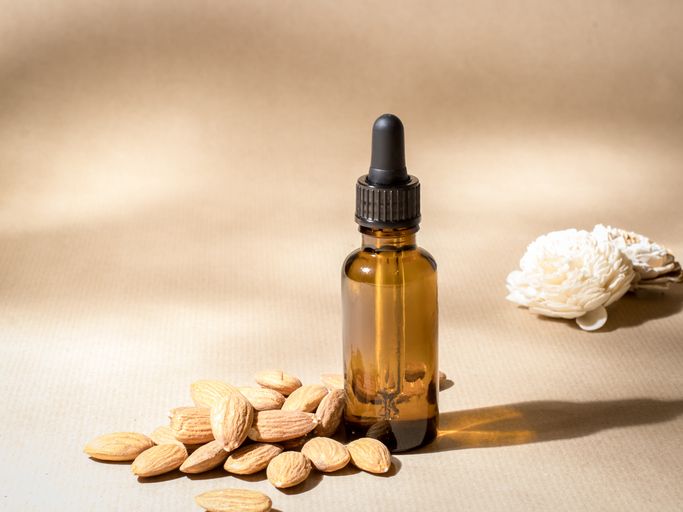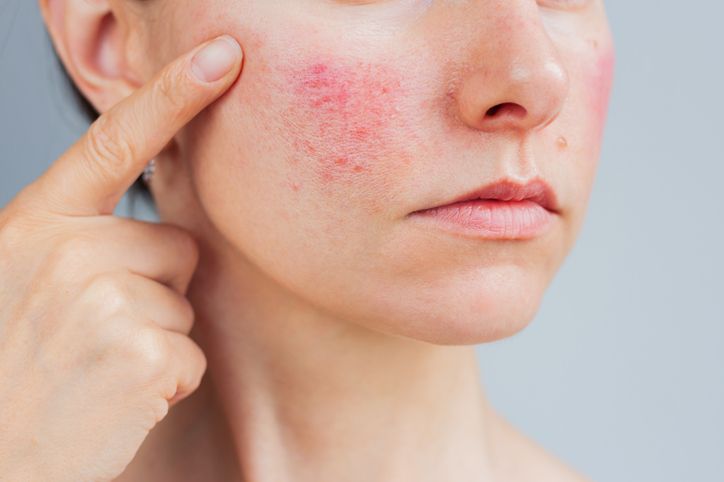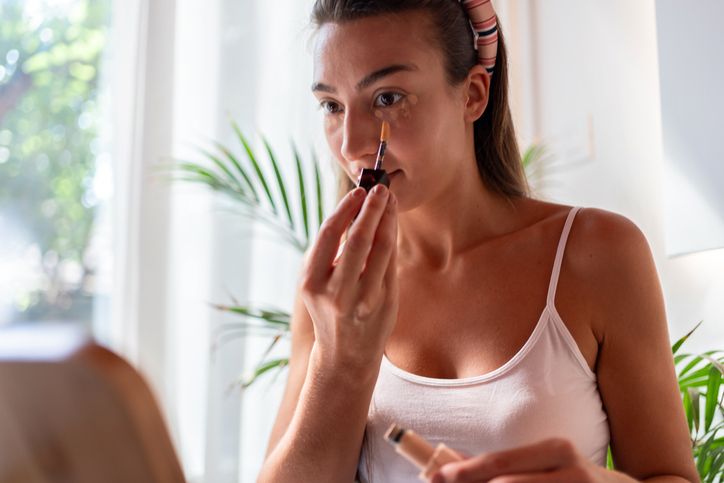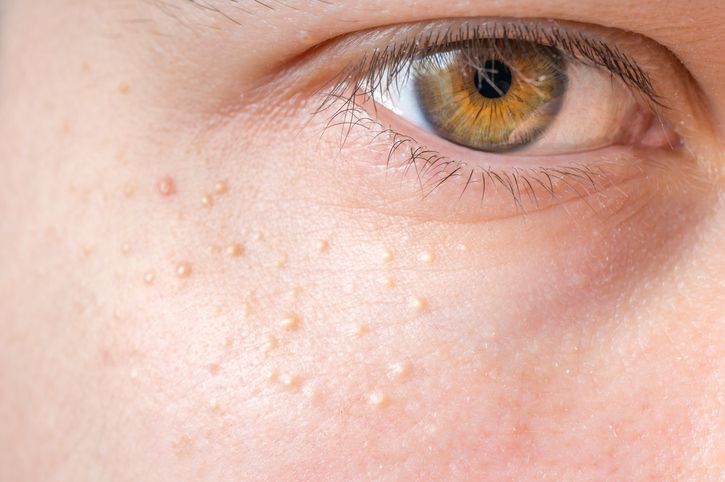- Home
- Trend
- Weight Loss Strategies
- Acne Tips
- Hair Health Information
- Blemish Removal Tips
- Acne Scar Removal Tips
- Muscle Building Techniques
- Intimate Care Tips
- Postpartum Intimate Care
- Eye Bags Wiki
- Tips for Face Slimming
- Secret of Permanent Hair Removal
- Breast Enlargement Tips
- Cure to Snoring
- Marionette Lines
- Skin-Tightening Secrets
Scalp issues can range far and wide: dandruff, dryness, itching, excess oil, pimples, odor, allergic reactions, redness, and more. If you ignore these problems, they can escalate into hair loss, thinning, and sparse hair—which can seriously impact your appearance. Imagine being young with a receding hairline or balding patches—you’ll regret it later! This article starts with the most common issue—dandruff—and walks you through managing scalp health step by step.
Why Do I Get Dandruff? What is Dandruff?

Dandruff is the most talked-about scalp issue. When things go wrong—whether dryness, oiliness, or inflammation—dandruff can suddenly worsen. Flakes fall like snow, covering your shoulders and back, and dark clothes feel off-limits!
In reality, ordinary dandruff is just dead skin cells from normal skin turnover—nothing alarming. Your scalp is like the skin on your face: as new cells are born in the basal layer, they migrate upward, fill with keratin, and die, then shed in tiny flakes: that’s dandruff. So everyone with a healthy scalp sheds flakes—but if flakes suddenly increase, clump together, or come with itching or redness, that could be a warning sign of a deeper scalp issue.
Is Dandruff Caused by Fungus on the Scalp?

When flakes increase in size or amount, it signals an ecological imbalance on your scalp. Excess dandruff is often caused by overgrowth of Malassezia (a type of yeast). This fungus breaks down proteins in your epidermis, damaging the natural oil barrier and creating microscopic lesions. As a result, moisture is lost, oil levels plummet, and scaly flaking accelerates. To control this, you often need an anti-dandruff shampoo that suppresses fungal growth.
免費體驗
F8 Hair Regrowth Treatment
1 Minute Self-Registration
Date should not be before minimal date
Why Does Shampooing More Make Dandruff Worse? Oil Control Isn’t Enough
Normal dandruff is transparent and tiny—you only see it under bright lights or on dark clothes. Those with sensitive scalps, however, may develop larger, chunkier flakes due to disrupted cell turnover. Using heavy-duty cleansing, oil-control, or antibacterial shampoos can actually worsen the condition.
Many believe dandruff is caused by dirt or excess oil—but the real issue is a disruption in your scalp’s microbial ecosystem. The scalp holds two key bacterial strains in balance: Cutibacterium acnes and Staphylococcus. When Staph overgrows, dandruff and itching worsen; it thrives on scalp oil. In contrast, a well-hydrated scalp fosters Cutibacterium, which keeps Staph in check.
So, to treat dandruff effectively, you need to balance antibacterial, oil-control, and hydration—only this trio can restore scalp health.
Self-Test for Sensitive Scalp: Dry vs Oily Dandruff
• Dry Dandruff: Hair feels coarse or dull. No strong odor. Flakes are small, white, and barely noticeable.
• Oily Dandruff: Hair looks greasy and sticky (especially bangs). Yellow-white flakes, larger in size. Tends to smell unpleasant.
Self-Check: Signs of Scalp Sensitivity
Do any of these apply to you?
1. Soon after washing, your scalp feels tight and itchy.
2. During seasonal changes or fatigue, your scalp tightens, itches, or feels oily quickly.
3. Using low-moisture shampoo leads to dandruff quickly.
4. Frequent itching—your scalp is too dry, producing too little oil.
*The more you check “yes,” the more you need to rethink your shampoo and washing routine.
免費體驗
F8 Hair Regrowth Treatment
1 Minute Self-Registration
Date should not be before minimal date
4 Key Indicators of Scalp Health
1. Hair density
2. Hair thickness
3. Receding hairline
4. Scalp oiliness
These help you assess scalp health. Beyond dandruff, your hair quality and hair loss matter too—because healthy follicles depend on a healthy scalp to nourish a full, lustrous mane.
1. Hair Density
You’re born with around 1 million follicles, and they don’t regenerate—once lost or miniaturized, they’re gone. Each follicle can grow 1–3 hairs. Normal shedding is around 70–100 hairs daily, more during washing or brushing. Losing over 100 hairs isn’t automatically pathological—compare to your usual shedding. A sudden increase should prompt concern and action.
2. Hair Thickness
Thin hair signals weak follicles—perhaps due to poor blood circulation, autoimmune issues, or infection. Hair becomes fine or prematurely sheds, causing thinning and potential baldness over time.
3. Receding Hairline
More common in men (due to androgenic alopecia), but lifestyle, diet, or immune imbalance can worsen it in women, too. Early intervention when noticing a receding hairline is crucial to stop further loss.
4. Scalp Oiliness
Too much or too little oil is problematic. Oil overload feeds fungal and bacterial growth, leading to inflammation and dandruff, while extreme dryness causes itching and flaking. To assess:
• Normal scalps feel oily ~2 days post-wash.
• Dry scalps feel tight and may only get oily in bangs.
• Oily scalps may need daily washing.
Why Is My Scalp So Itchy? Common Causes Behind Scalp Problems
1. Seasonal Changes
Scalp issues often flare up during seasonal transitions. While Hong Kong basically has two seasons—an extended summer and a brief autumn-winter—you shouldn’t underestimate the impact of shifting weather. Sudden changes like moving frequently between air-conditioned rooms in summer or the sharp drop in humidity during winter can trigger scalp imbalances. More oil production in the heat and excessive dryness in the cold disrupt the natural turnover of scalp cells, leading to flaky buildup or larger patches of dead skin. The fix? Switch to season-appropriate shampoos and consider wearing a hat during colder months to lock in moisture.
2. Frequent Bleaching and Dyeing
If you color or bleach your hair often, chances are your scalp is reacting to leftover chemicals. The scalp is a living organ that renews itself through skin cell turnover, which helps eliminate toxins. But constant exposure to hair dye and bleach doesn't give it time to recover. This can lead to contact dermatitis, with symptoms like redness, itching, and inflammation that may return again and again, potentially resulting in chronic sensitivity or inflammation.
3. Over- or Under-Washing
Both insufficient cleansing and over-washing can lead to scalp issues. It all depends on your shampoo, how often you wash your hair, and your technique. Don't fall into the trap of thinking oily scalp equals dandruff. Overusing oil-control shampoos might actually dry out your scalp, making it itchier and more irritated. If you're currently using one, try switching to a more hydrating formula to see if your symptoms improve. Once your shampoo is sorted, adjust your washing frequency. And no matter what—always use your fingertips, not your nails, to cleanse your scalp gently.
4. Sharing Personal Items
Yes, scalp issues can be contagious. The fungus responsible for conditions like seborrheic dermatitis and oily dandruff can spread through contact, especially via shared items like towels, combs, or hair clips. Avoid sharing anything that touches the scalp, and regularly clean your own grooming tools. Combs, in particular, can build up oils, dirt, and bacteria over time, so keeping them clean is a small but important step in maintaining scalp health.
5. Hot Water When Washing Hair
Hot and humid weather can increase scalp oiliness, and washing your hair with overly hot water only makes it worse. Aim to wash your body with comfortably warm water (around 38–40°C), but keep your hair wash temperature slightly lower (36–38°C). Using water that's too hot can strip your scalp of essential oils, leading to dryness or imbalances. Before washing your hair, make sure to lower the water temperature to avoid aggravating your scalp.
How to Soothe an Itchy Scalp: Anti-Dandruff Shampoo Options
As mentioned, dandruff is often a natural part of skin renewal. But if you're suddenly seeing a snowstorm on your shoulders, it may be due to a fungus called Malassezia. This microorganism thrives on scalp oil and breaks it down into fatty acids, which irritate the skin and trigger dandruff, itchiness, and even redness.
Shampoos with antifungal ingredients can help control this. Here are some common active ingredients to look out for:
• Selenium Sulfide
A registered medicinal ingredient that helps control oil, reduce fatty acids in sebum, and make the scalp less hospitable to fungi. It’s great for more comprehensive scalp care.
• Ketoconazole
Another registered medicinal ingredient that effectively inhibits fungal growth. However, it doesn’t change the underlying scalp environment and can sometimes cause contact dermatitis.
• ZPT (Zinc Pyrithione)
Found in many over-the-counter anti-dandruff shampoos, it's milder but still helps suppress both bacterial and fungal activity.
免費體驗
F8 Hair Regrowth Treatment
1 Minute Self-Registration
Date should not be before minimal date
Targeted Solutions for 5 Common Scalp Concerns
1. Odorous Scalp
• Use shampoo suited to your hair type and adjust it with the seasons—don’t share one bottle with the whole family.
• Rinse thoroughly after shampooing, avoid getting conditioner on your scalp, and try a caffeine-infused shampoo.
• Wash your hair at night, change pillowcases frequently, and wash your towel daily to prevent bacteria buildup.
• If oily scalp comes with acne or oily skin, adjust your diet—cut back on fried foods, meats, processed items, and sugar. Load up on antioxidant-rich fruits and vegetables.
• Mental stress also contributes to scalp odor. Stress triggers the production of fatty acids on the scalp, so regular exercise and adequate rest are essential.
2. Dandruff & Seborrheic Dermatitis
• If dandruff is still manageable, try an anti-dandruff shampoo. But if it becomes excessive, see a dermatologist—you could be dealing with a scalp condition like seborrheic dermatitis.
• Overdoing oil control, cleansing, or hydration won’t help. The goal is a healthy scalp environment with balanced oil and normal skin turnover.
• If your scalp feels tight or itchy shortly after washing, it’s time to change your shampoo.
• Fungi love moist environments. Blow-dry your scalp thoroughly within 10–15 minutes after washing—don’t let it air dry repeatedly.
3. Itchy Scalp
• If itchiness and tightness come quickly after washing, your shampoo may be too harsh.
• You might need scalp-care products that exfoliate (with ingredients like salicylic acid) or deeply hydrate.
• Skip all styling products for now, including dry shampoos and powders.
• Washing more often isn’t the solution—it can strip your scalp's natural oils and disrupt its pH, making things worse.
• Wash with lukewarm water, and massage your scalp gently with your fingertips while shampooing to boost circulation.
• If changing shampoos or routines doesn’t help, consult a dermatologist. You might be dealing with ringworm, dermatitis, lice, scabies, or even eczema.
• Wash pillowcases and personal items like combs or hair clips frequently.
• Avoid keeping your scalp damp—don’t let it go from wet to dry repeatedly.
4. Oily Scalp & Scalp Acne
• Choose silicone-free, mild shampoos that cleanse without over-hydrating. If your scalp is very oily, skip conditioner and use hair oil only on the ends before blow-drying.
• Don’t use overly hot air when blow-drying. Use a large nozzle to shorten drying time, keep the dryer about 15cm from your scalp, and don’t overheat any one spot.
• Diet also matters—reduce intake of fast food, sugary or greasy items, dairy, and inflammatory foods like coffee during warmer months.
• Load up on fresh fruits and veggies for B vitamins, zinc, and iron to help regulate oil production.
5. Hair Loss
If you suspect hair loss, monitor the amount falling out each day. If you’re shedding more than 100 strands daily for several days, it could be early-stage hair loss. Early intervention is key.
• If you haven’t changed your shampoo recently, it’s likely not the cause. Still, you can try anti-hair loss shampoos or hair tonics—effectiveness will vary depending on your scalp type and hair loss triggers.
• Genetics plays a role, but so do lifestyle and diet. Many hair loss cases are linked to stress, poor sleep, or nutritional deficiencies—especially during dieting.
• Your scalp needs downtime, too. Hair growth hormones peak two hours after you fall asleep, so if you constantly stay up late, hair repair and growth are compromised. Lack of rest means even healthy follicles can weaken over time.
F8 Hair Regrowth Treatment: When Flakes and Oil Are Out of Control
Don’t ignore persistent scalp issues like flakes, oiliness, itchiness, odor, or pimples. If left untreated, they can lead to inflammation and progress into visible thinning or hair loss at the crown or part line.
Tried adjusting your diet, switching shampoos, and eating “hair-friendly” foods but nothing works? It might be time to consider laser scalp therapy.
The F8 Hair Regrowth Treatment uses 650nm LLLT (low-level laser therapy)—a non-invasive method that targets the deeper layers of the scalp without causing any wounds. It boosts blood circulation, supports new capillary growth, and restores the scalp’s oil-moisture balance. The result? Less sensitivity, reduced itchiness, and healthier hair follicles that can produce stronger, thicker strands.
In addition to the laser, the F8 treatment also includes scalp detox with intensive nutrients that remove chemical buildup and excess sebum, hydrate the scalp, and restore its natural balance—essentially “resetting” the environment where your hair grows.
An itchy or oily scalp may be the first step toward hair loss. Don’t wait—restore scalp health now before it’s too late.
Book Your Treatment Now: Perfect Medical F8 Hair Regrowth Treatment免費體驗
F8 Hair Regrowth Treatment
1 Minute Self-Registration
Date should not be before minimal date
FAQ

How can I prevent and treat scalp issues?
Scalp problems like dandruff, excess oil, itchiness, and odor are often related to both scalp care habits and individual skin type. When symptoms appear, resist the urge to scratch your scalp with your fingernails—this can cause micro-injuries and further damage your scalp’s natural protective barrier. Washing your hair more frequently won’t necessarily help either. In fact, overwashing can dry out the scalp and trigger even more oil production. Instead, review your hair-washing habits and consider switching to a shampoo that’s pH-balanced (around pH 5.5) or contains anti-fungal properties to help curb fungal overgrowth. Lifestyle also matters: a balanced, light diet and sufficient sleep play a big role in maintaining both scalp and hair health.
What’s the correct hair washing routine?
Before shampooing, detangle your hair with a comb to remove dust and prevent knots. Warm up your body with a warm shower before shampooing. Lower the water temperature slightly for your scalp, and make sure your hair and scalp are thoroughly wet. Use your fingertips to gently massage and hydrate the scalp. Dispense a coin-sized amount of shampoo into your palm, lather it up with water, then apply the foam evenly to your scalp and hair. Never pour shampoo directly onto your scalp—it can be too concentrated and harsh. Spend at least 2 minutes massaging your scalp with your fingertips (not nails). This not only cleanses effectively but also stimulates circulation. Gently towel-dry your hair, put on a hair-drying cap, and wait 5–15 minutes until your hair is about halfway dry. Apply hair oil to the ends, comb through, then blow-dry using warm—not hot—air until the scalp is completely dry.
Can diet improve scalp health?
Absolutely. Nutrients found in hair-friendly foods can make a significant difference: Vitamin A and beta-carotene restore shine to dull hair. Vitamin B5 helps prevent hair loss. Vitamins B2, B6, and folic acid support red blood cell production, boosting circulation and delivering oxygen and nutrients to hair follicles. Vitamin C enhances collagen production and increases scalp hydration, which helps rebalance the scalp’s microbiome and strengthens both scalp and follicles. Trace minerals also matter: Copper deepens hair color and prevents premature graying. Zinc supports hair follicle cell formation. Iron aids in oxygen delivery to hair follicles. These nutrients can all be obtained through a balanced diet—just aim for variety by consuming more than 12 different food items daily. At the same time, limit oily, sugary, fried, and greasy foods, as well as dairy and “heaty” items like coffee, which can trigger excessive sebum and worsen scalp issues.
How do I choose the right anti-dandruff shampoo?
Look for active antifungal ingredients such as: Selenium Sulfide, Ketoconazole, and Zinc Pyrithione (ZPT). These ingredients help reduce fungal overgrowth and excess oil on the scalp. But it’s just as important to avoid harmful or irritating substances like: MIT/CMIT preservatives, Parabens, SLS/SLES (harsh surfactants), Dioxane and heavy metals (potentially carcinogenic or harmful to health). When using anti-dandruff shampoo, leave the lather on your scalp for around 5 minutes before rinsing to allow the active ingredients to work. Formulas with menthol can also help soothe itchiness.
What treatments can help with scalp issues?
Our F8 Laser Hair Regrowth Treatment addresses scalp problems at the root with a three-step approach: Nourish, Revive, and Regrow. Nourish: The treatment starts with a deep cleanse using professional-grade scalp care products to clear out clogged pores, dead skin cells, and leftover chemicals from past hair treatments. Revive: A 650nm low-level laser (LLLT) is applied directly to the scalp to stimulate circulation and awaken the hair follicles. At the same time, powerful nourishing ingredients are infused to support cellular renewal and improve follicle vitality. Regrow: A potent hair growth serum is applied to activate stem cells in the deeper scalp layers, helping to regenerate scalp tissue and promote the growth of new, healthy cells. Over time, this helps rebuild a stronger, healthier scalp environment. The result? Visible improvement in oiliness, flaking, itchiness, and odor. A healthier scalp also boosts confidence—and leaves a better impression on others.









